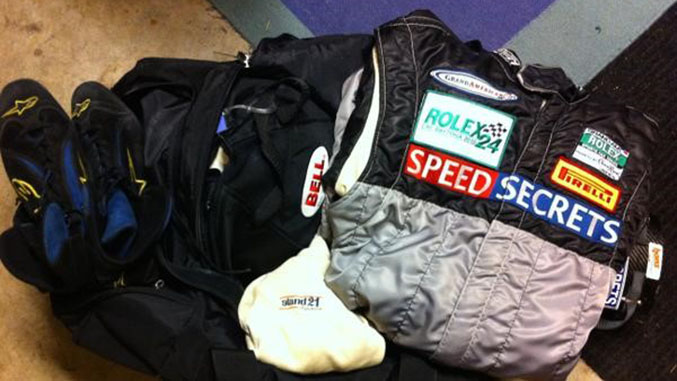It’s been said that preparation is not just one thing, it’s everything, and Davin provides some great reminders of this message in this week’s feature article. As a kart racer, he knows what it’s like to do his own prep, pack up his tools and spares, tow to the track, race, tune the kart between sessions, pack up, head home, and start all over again. It sounds simple, but there’s a method to the madness – at least, there should be. – Ross
Once I decide to go to the track, I always reflect on a phrase that an experienced national-level karter said to me when I first started racing: "If you ever plan to work on your equipment at the track, you might as well stay home. Just mail in your entry fee."
That advice taught me how critical pre-race preparation was in order to have a smooth race weekend. In my opinion, quality preparation yields quality results. It’s astonishing how many times I’ve gone to the racetrack to find people pulling half-finished cars or karts out of the trailer, hoping to finish the thing prior to getting it on track on the race weekend. Racing itself is already hard enough!
Getting prepared does take some effort, but it’s not impossible. Here are six easy ways that you can improve your pre-race preparation:
1. Schedule an examination of your equipment several days prior to leaving for the track.
Time is the greatest luxury you can provide yourself. If you discover an issue, giving yourself enough time to find a solution can make the difference from winning the race to being stuck on the sidelines. On the evening that I get home from the track, I schedule myself for another day to examine my vehicle before the next race.
2. If you can’t get organized, find someone who can organize your equipment for you.
Some people are just better at organizing things than others. Find someone who is naturally good at organizing, and have them help you figure out what types of containers you need in order to keep your race gear in order. Having a way to store your gear will make it easier for you find tools and equipment fast; time at the track is always at a premium.
3. Create preparation checklists to help you get yourself into a pre-flight rhythm.
There is nothing worse than needing a tool at the track, only to find that you’ve forgotten it at home. Creating a checklist of the things that you need to bring to the track will help minimize the risk of leaving a crucial tool at home where it’s least useful.
4. Assume that you need at least one spare of every item that you bring with you. Start gathering parts in advance.
If you can race with it, you can break it. Start gathering spare parts before you need them. Brake pads, extra rotors, air filters, etc. If it can be consumed completely through track driving, you will need at least one spare of it. Keep in mind that tiny items like bolts, nuts, and washers also count as spare parts, so make sure that you have a box full of the ones you use. Normally, if you look for parts when you don’t need them, you can find better deals when purchasing because you’re taking your time.
5. Take other racers’ organization tips back to your pit area. Use what works.
Every good racer will have their own method for keeping their equipment organized. When you can, speak with them and see what tools and processes they use to keep everything in order. Whenever you’re at the track, take notes on the equipment and tools that the more-prepared teams have. Pay attention to what equipment they have, and how they keep it organized, in order to go the next level. At the very least, people will know that you’re just as dedicated to being ready to go racing as you are about being on the track.
6. Schedule practice days just to practice setting up your pit area.
Practice days are not only great ways to find yourself some extra seat time and check your vehicle, but they also give you a chance to practice setting up your pit area when there is less stress. A large factor in being properly ready to be at the track is having an organized area to work on your vehicle. If you get used to having your equipment arranged in a particular way, it will make things easier to find when you need them fast.
Coming to the track prepared doesn’t prevent bad things from happening to you. However, it does reduce the number of stressors you have to deal with. Time is always at a premium at the track, so the more organized you are, the more effective you will be.
There is another benefit to being better prepared; it reflects strongly on you, if you’re looking for potential sponsors and supporters to become more interested in your racing program. Sponsors are looking for racers who look like they have their act together, both on and off the track. If you’re constantly scrambling around in a messy pit, or always trying to fix a broken car that never runs, it reflects poorly on you. You don’t look like you know what you’re doing, and that doesn’t help promote a good self-image.
Being on the track takes up enough of your attention. Spend more of your race weekends enjoying the seat time, rather chasing up mini-dramas related to organization that could be avoided in advance.
Have fun!
– Davin Sturdivant


